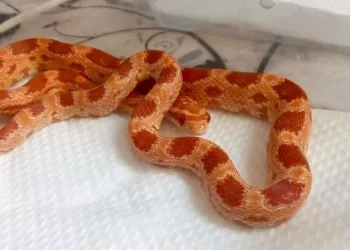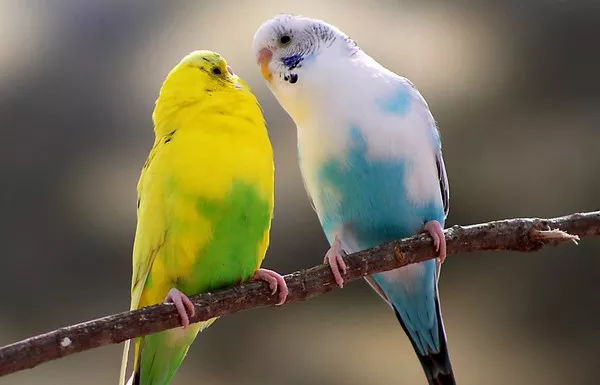When we think of pets, images of playful puppies, purring cats, or chirping birds often come to mind. But what about those with scales, like the corn snake? Corn snakes are popular pets known for their docile nature and stunning colors. However, they are often misunderstood when it comes to their social needs. Do these serpentine creatures crave companionship, or are they perfectly content living the solo life? Let’s unravel the mystery of corn snakes and their social habits!
A Brief Introduction to Corn Snakes
Corn snakes (Pantherophis guttatus) hail from the southeastern United States. They prefer warm, dry habitats and can often be found in grasslands, woodlands, and even near human settlements. These snakes are named for their resemblance to the colorful maize found in cornfields. With their vibrant patterns, they can come in shades of orange, brown, yellow, and even albino variants. Corn snakes are non-venomous constrictors, meaning they subdue their prey—usually small rodents—by coiling around them.
As a pet, corn snakes are relatively low-maintenance. They don’t require daily walks like dogs or constant attention like cats. Instead, they need a properly sized enclosure, suitable heating, humidity, and a balanced diet. But one of the biggest questions among potential and current snake owners is whether these reptiles need companionship.
The Social Nature of Pets
Before diving into the world of corn snakes, it’s essential to understand the general social needs of pets. Most pets, like dogs and cats, are social animals. Dogs have evolved alongside humans for thousands of years, thriving on interaction. Cats, though more independent, also benefit from companionship, whether it be from humans or fellow felines.
However, not all pets share the same social needs. Fish can happily swim solo, and reptiles often lead solitary lives. Understanding these needs can help owners create an environment that promotes happiness and health.
Do Corn Snakes Have Friends?
When we talk about companionship in the animal kingdom, we often think of animals that live in groups. For example, dolphins travel in pods, elephants form herds, and bees create colonies. But corn snakes belong to a different category. They are not social creatures by nature.
Solitary Lives
Corn snakes are solitary animals. In the wild, they typically live alone, except during the breeding season. Male corn snakes will often seek out females, and after mating, they part ways. Once the eggs are laid, the female has no further role in caring for them. This lack of parental care is common among reptiles. After laying eggs, a female corn snake will leave, allowing her young to fend for themselves.
Territorial Behaviors
Although corn snakes do not exhibit strong territorial behavior like some other reptiles, they prefer their own space. In captivity, this means providing them with an environment where they can hide, explore, and feel secure. Overcrowding can lead to stress and health problems. Thus, putting two corn snakes in the same enclosure is not advisable.
Social Interactions
Corn snakes may not seek out friends, but they do exhibit some interesting social interactions. For instance, they may engage in combat during mating season. Male corn snakes will often wrestle with each other to assert dominance. This behavior might look fierce, but it’s a natural part of their mating ritual.
The Pros and Cons of Keeping Multiple Corn Snakes
As we explore the idea of having more than one corn snake, it’s essential to weigh the pros and cons.
Pros
Diverse Colors and Patterns: Keeping multiple corn snakes allows you to enjoy various morphs. Corn snakes come in many stunning colors and patterns, making your collection visually appealing.
Observation Opportunities: Watching multiple corn snakes can be entertaining. Their unique behaviors can provide endless fascination.
Learning Experience: Owning several snakes can teach you more about their individual personalities and care requirements.
Cons
Stress and Aggression: As mentioned, corn snakes prefer solitude. Keeping them together can lead to stress, aggression, and health issues.
Space Requirements: Each corn snake needs a proper-sized enclosure. This can take up significant space and resources.
Increased Care: More snakes mean more work. You’ll need to manage feeding, cleaning, and health checks for each individual snake.
Ideal Living Conditions for Corn Snakes
To ensure your corn snake thrives, it’s vital to create an ideal environment for them. Here are some essential factors to consider:
Enclosure Size
The enclosure should be large enough for your corn snake to move around comfortably. A 20-gallon tank is suitable for a juvenile, while adults need at least a 40-gallon tank. Providing horizontal space is essential as corn snakes love to explore.
Hiding Spots
Corn snakes are masters of disguise. They feel safer in an environment with hiding spots. Provide various hides, such as caves, logs, or commercially available reptile hides. This allows your snake to feel secure and reduces stress.
Temperature and Humidity
Corn snakes require a temperature gradient in their enclosure. One side should be warmer (80-85°F) for basking, while the other should be cooler (70-75°F). Humidity levels should be around 40-60%, which can be achieved through regular misting and proper substrate.
Clean Environment
A clean enclosure is crucial for your snake’s health. Regularly remove waste, uneaten food, and shed skin. This prevents bacteria and parasites from thriving in their habitat.
Enrichment Activities for Corn Snakes
Although corn snakes don’t need friends, they do benefit from environmental enrichment. Keeping their minds and bodies active is vital for their well-being. Here are some activities to consider:
Hiding and Climbing Structures
Adding branches, shelves, or climbing structures can mimic their natural environment. Corn snakes are great climbers, and providing vertical space can be beneficial.
Foraging Opportunities
Create foraging opportunities by hiding food around the enclosure. This encourages natural hunting behaviors, making mealtime more engaging.
Interactive Feeding
Consider using feeding tongs for interactive feeding. This allows you to bond with your snake while engaging their natural instincts. It’s also safer than hand-feeding, which can lead to accidental bites.
Handling and Interaction
While corn snakes are not known for their social nature, regular handling can help them become more accustomed to human interaction. Be gentle and calm when handling, as sudden movements can startle them.
Recognizing Stress in Corn Snakes
Even though corn snakes are solitary creatures, it’s essential to recognize when they’re stressed. Stress can lead to health issues and behavioral problems. Here are some signs to watch for:
See Also: What Does a Corn Snake Eat?
Aggression
If your corn snake suddenly becomes aggressive, it may be a sign of stress. This can manifest as hissing, striking, or defensive posturing.
Refusal to Eat
A sudden loss of appetite can indicate stress or illness. If your snake refuses food for more than a week, consult a veterinarian.
Excessive Hiding
While hiding is normal, excessive hiding can indicate stress. If your corn snake spends all its time hidden, it may be uncomfortable in its environment.
Shedding Problems
If your corn snake has difficulty shedding, it may be due to improper humidity levels. Regularly monitor humidity and provide a suitable shedding environment.
The Importance of Veterinary Care
Regular veterinary care is essential for the health of your corn snake. Reptile veterinarians can provide specialized care, including wellness checks, vaccinations, and treatments for parasites or diseases.
Finding a Reptile Veterinarian
Not all veterinarians are experienced in reptile care, so finding one who specializes in reptiles is crucial. Look for local exotic pet clinics or veterinarians who have experience with snakes.
Routine Check-Ups
Just like dogs and cats, corn snakes benefit from regular check-ups. A vet can help monitor your snake’s health, weight, and overall condition.
Common Health Issues
Corn snakes can suffer from various health issues, including respiratory infections, mites, and gastrointestinal problems. Being aware of these issues can help you catch them early.
Conclusion
In conclusion, corn snakes do not need friends in the traditional sense. They are solitary creatures that thrive in their own company. While they may not form bonds like dogs or cats, they can still be fascinating companions. By providing them with a comfortable, enriching environment and the right care, you can ensure your corn snake leads a happy and healthy life.
So, if you’re considering getting a corn snake, remember: it’s best to keep them solo. They’ll appreciate their space and will thank you with their captivating presence. And who knows? You might find yourself captivated by their unique charm, whether they’re lounging in their hide or gracefully slithering across your hand. Corn snakes may be solitary, but their beauty and elegance make them worthy companions. Embrace their independence, and enjoy the journey of being a corn snake owner!
Related Topics:
























